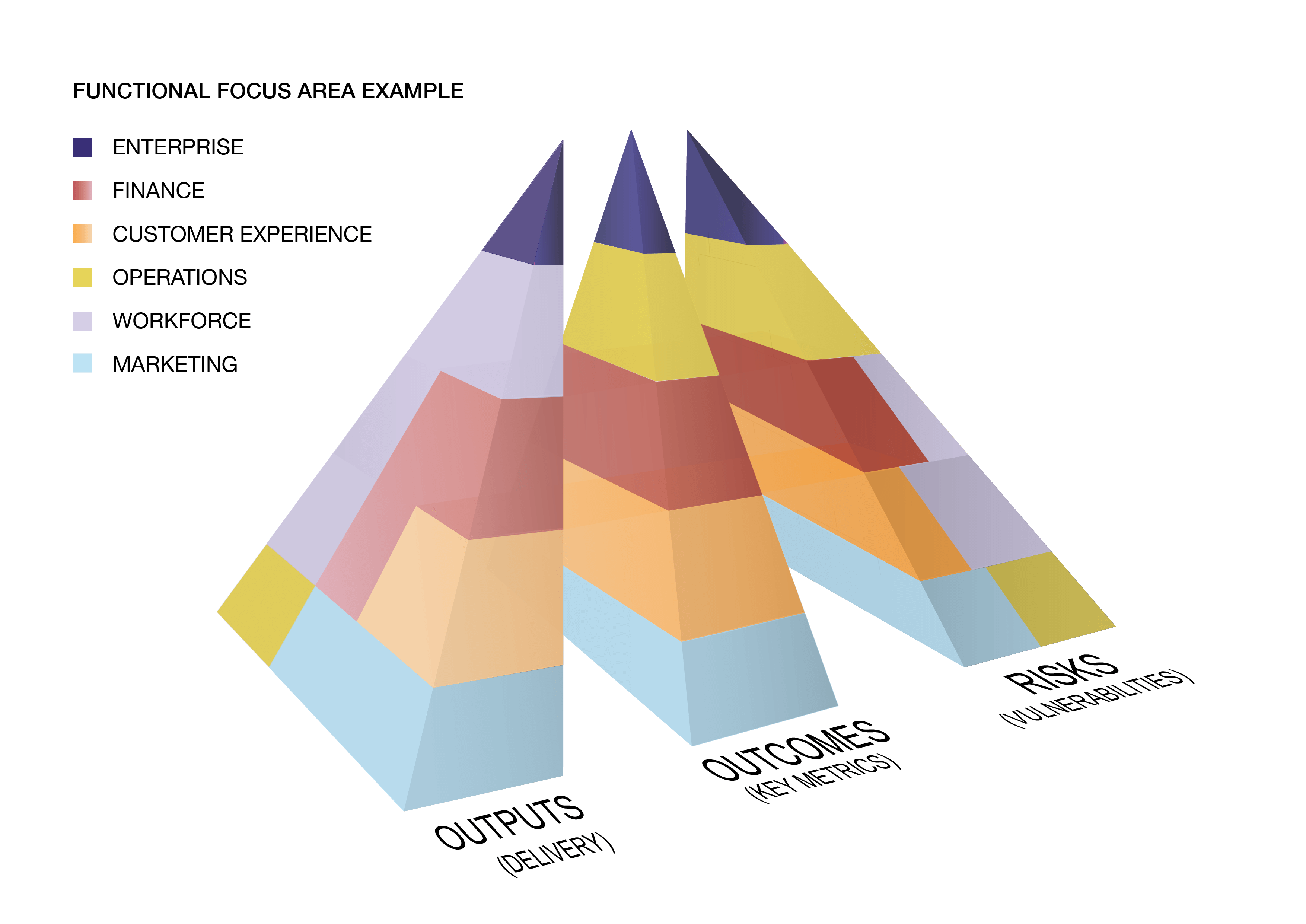How Versus Why – Comparing Strategies to Focus Areas
Last month I introduced our concept of a 3 dimensional strategy pyramid. To be a complete graphical representation of the complex world of strategic execution, the pyramid requires depth as there are multiple variables needed to measure the quality of execution performance (what we call “strategic health”). Those variables include workforce delivery performance (outputs), key metrics (outcomes) and strategic risk; together these qualitative and quantitative variables are combined into the single overarching measure of strategic health. But there is an important additional dimension to fully understand and tell the story of any strategic plan.
Strategic Categorization
Imagine now that we have regions which traverse through these 3 wedges of the pyramid, where every part of each wedge is included and categorized in 1 of these regions (NB: each and every action should align to a region). Each region ties together a range of outputs, outcomes and potentially risks. Once appropriately labelled these regions form broad strategic categories. Across the field of strategy these regions are described in many ways; strategic themes, thematic goal areas, perspectives, pillars or values; within StrategyBlocks we describe these regions as Focus Areas. Naming convention flexibility is very important, I have read many strategic plans and they are all as different as the organizations that created them. However the use of these broad classifications is consistent across all of them.
“How” or “Why”?
These areas of focus don’t specifically describe what we as an organization intend to do, they are not “how” statements specifically. Instead they are more useful when thought of as “why” statements. As an example, focus areas may be more value based e.g. “to lead through innovation”, or department centric e.g. “to be financially sustainable”, or even geographic “west coast expansion”, or it could be used to model a certain strategic framework. When modeled in StrategyBlocks they can be multi-leveled hierarchies, so a variety or mixture can be used interchangeably if desired. Flexibility is the key.
Starting with “Why”
But organizations do get confused when formulating their plans and often the line between action (how) and focus (why) becomes blurred. It is important to ask the question, “is this something we are going to do?” or “does it describe the things that we do?”. The strategic plan or business plan requires both to be a relevant useful corporate tool. Next time you are reviewing your strategic plan try starting with focus areas before diving straight into the “How”.




Leave A Comment